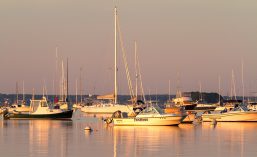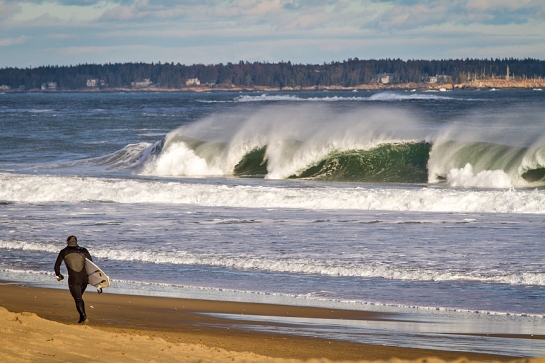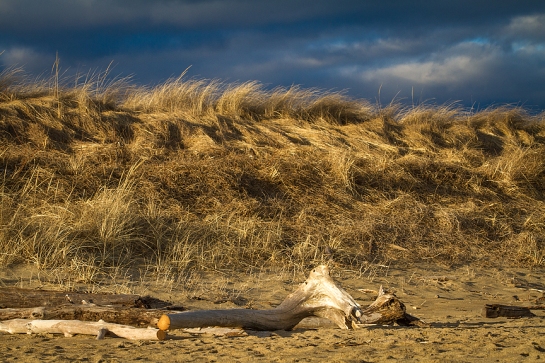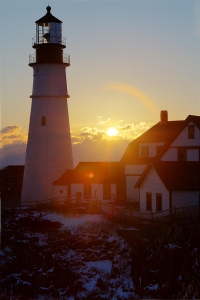It’s hard to believe that almost ten years have passed since I had the opportunity to visit Japan and experience its culture first hand. Fortunately, thanks to my collection of photographs taken during that trip, I can still relive the sights and recall the wonderful people that make up this great country.

Prior to this 2004 journey, my connection to Japan had been twofold: my family and I hosted a Japanese exchange student for ten months in 1999 and the chance to reunite with her and her family was too much to pass up. In addition, I had met and worked with several Japanese engineers and quality consultants through my employer and I felt a need to see for myself what their world was like. The opportunity presented itself through the Portland, ME /Shinagawa, Japan Sister City relationship program. My wife, a teacher in the Portland School System, received an invitation to participate in the 20th anniversary celebration to be held in Shinagawa in late April 2004 and we took advantage of this opening. So, together with my wife, daughter, brother-in-law and several dozen other Portland area dignitaries and interested citizens, I made the excursion to the Land of the Rising Sun.
Shinagawa’s connection to Portland dates back to the late 1800’s. It was then that Portland geologist, Edward S. Morse, undertook the first archeological excavation in Japan. Traveling by train, Morse noticed many shell mounds alongside the railroad tracks and suspected that, beneath their surface, they held secrets to Japan’s proud history. The citizens of Shinagawa were simply amazed at what Morse found and identified and they made him an honorary citizen and an official hero.
![7619038602_2fdaf2d6cd_z[1]](https://bicyclewithaview.wordpress.com/wp-content/uploads/2014/01/7619038602_2fdaf2d6cd_z1.jpg?w=545&h=436)
Traveling to Japan is more than a hop, skip and a jump and it took the better part of a whole day to get there. My wife likes to tell the story of how I fell asleep on the bus from Portland to Boston and didn’t wake up until the plane landed in Tokyo and that isn’t too far-fetched. However, I paid the price once I arrived in Shinagawa and had several sleepless nights where I resorted to watching televised English spoken trigonometry lessons at 3:00 am because it was the only program I could understand.
The Japanese are very detail oriented people and I knew that prior to embarking on this trip. Still, I wasn’t quite prepared for their level of detail and really had to chuckle upon arrival when our two page U.S. supplied itinerary was replaced by a version that filled a three-ring binder. Practically every 15-minute block of time during our stay was scheduled and accounted for. (That said, just about every event and activity started exactly on time.)
In addition to their attention to detail, the people of Japan are very ceremonial and a perfect example of that occurred during our first day’s visit to city hall. The event was scheduled so that the mayors of the two cities could exchange gifts and renew their commitment to the sister city relationship. As our bus pulled up to the curb, a loud round of applause could be heard coming from the building as every window was open and filled with cheering people. I kept looking around to see whom the applause was for and was shocked to learn that it was for ME and all the other Maine “VIP’s”. As we entered city hall, we were amazed to see that every single employee on all four stories had lined the halls and staircases to welcome us. To this day, my family and I have not forgotten that welcome.
Ahh, but there’s a price to pay for all that hospitality. After dining at a restaurant with our exchange student and her family, we invited them up to our hotel room for tea and deserts. The pastries were purchased at the local bakery in the train station but I made the mistake of ordering nine cups of tea from the hotel’s room service. The bill was in yen and, in all the excitement, I didn’t pay much attention to the cost. Once I did the math, I was shocked that nine cups of tea plus tax and tip totaled $110.00 US dollars. Yes, Tokyo is a very expensive city.
As I reflect back on that time, I am reminded that ten years is an eternity in the digital photography world, and both my skills and equipment have improved in the last decade. More importantly, I realize that photos from that trip taken with a pre-historic 2-megapixel camera still pass a time honored photography test: they tell a story.
You can view the photos from this trip at my website http://danlevesquephoto.com under the menu item Travel-Japan. Here’s the link.







![7619038602_2fdaf2d6cd_z[1]](https://bicyclewithaview.wordpress.com/wp-content/uploads/2014/01/7619038602_2fdaf2d6cd_z1.jpg?w=545&h=436)









